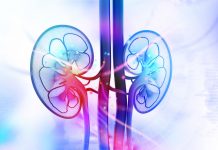Heart disease is Australia’s leading single cause of death.
With this in mind, pharmacy assistants can do a lot to reduce the toll on individuals, family and society. Read on for a wealth of information, including how to access the location of different cardiac rehabilitation or heart failure management program, Heart Foundation helpline support, and information booklets on heart failure
What is heart failure?
Heart failure is a condition where the heart doesn’t pump as well as it should.
When the heart is damaged and isn’t pumping properly it can become bigger, weaker, or stiffer. This change in the way heart pumps causes extra fluid to build up in the body and sometimes the lungs.
Heart attacks, high blood pressure, too much alcohol, problems with heart valves, hereditary conditions, infections, some medicines, pregnancy and abnormal heart rhythms can affect the heart.
Symptoms of heart failure
Symptoms of heart failure include feelings of weakness and fatigue; difficulty breathing or shortness of breath; swollen ankles or legs; a bloated stomach; pain in the chest; a fast or racing heart beat (palpitations); dizziness; coughing; and loss of appetite.
When should pharmacy assistants pay attention
Pharmacy assistants should especially pay attention when patients experience ankle, leg or stomach swelling; their pants, shoes or socks feel tight; they experience weight loss; they have a bad cough, especially at night, or a new cough that won’t go away; harder breathing than normal; an inability to walk as far as usual; the need to sit up to sleep; dizziness; racing heart and palpitations.
Help for heart failure
Pharmacy assistants can emphasise how important it is that patients comply with medication regimes. They can also direct them to physical activity and cardiac rehabilitation and heart failure management programs.
Heart devices include pacemakers and an implantable cardiac defibrillator which works to restore a normal rhythm in the lower heart chambers; the device can sense when the heart rhythm is not right and uses a small, electrical shock to reset the heart and return the rhythm to normal.
Click here to find the nearest local cardiac rehabilitation or heart failure management program, and here for an information booklet as well as other resources.







